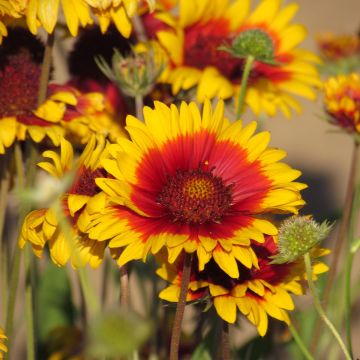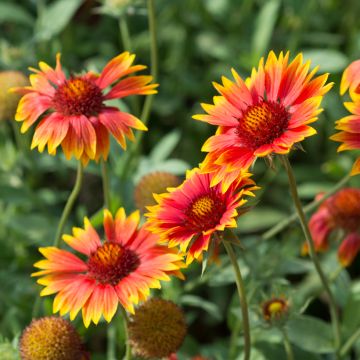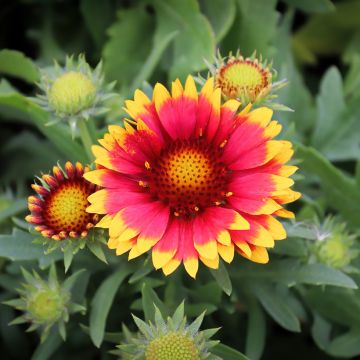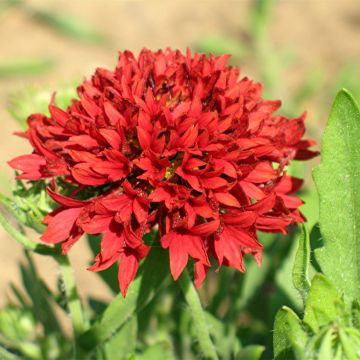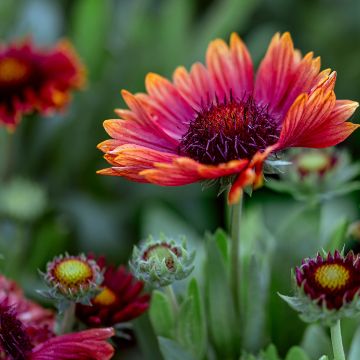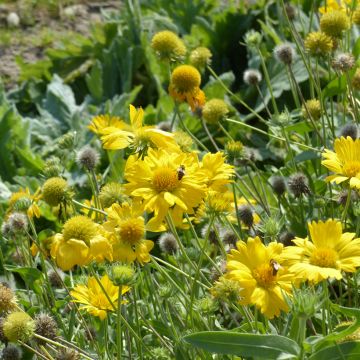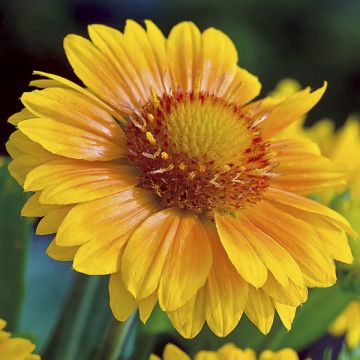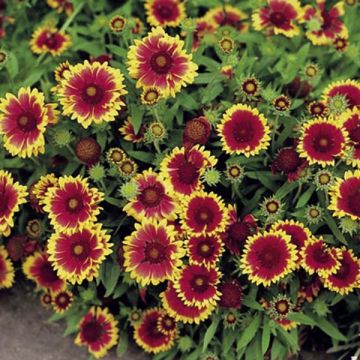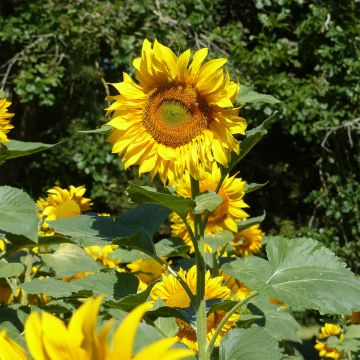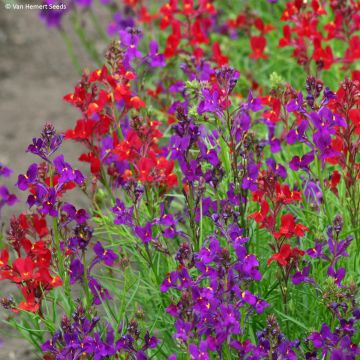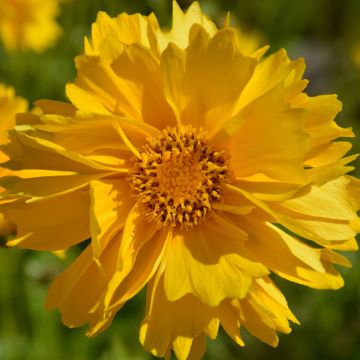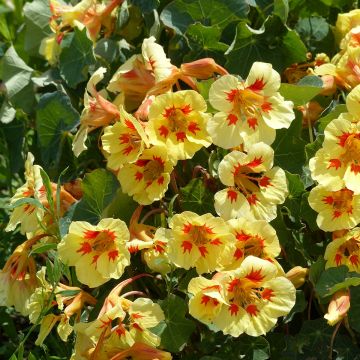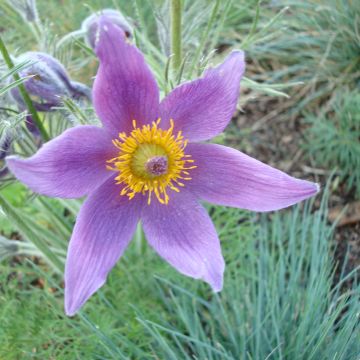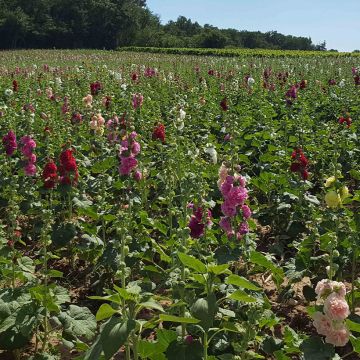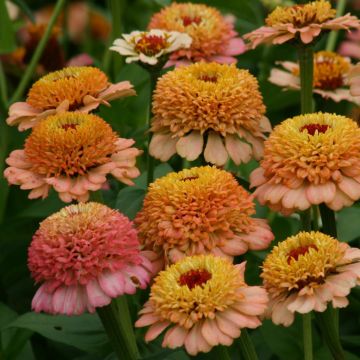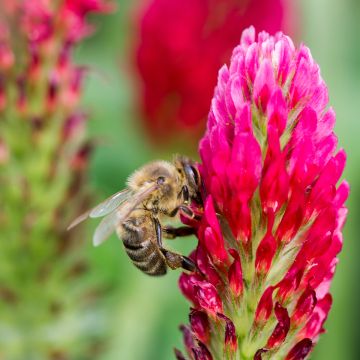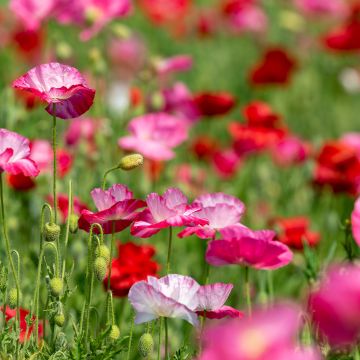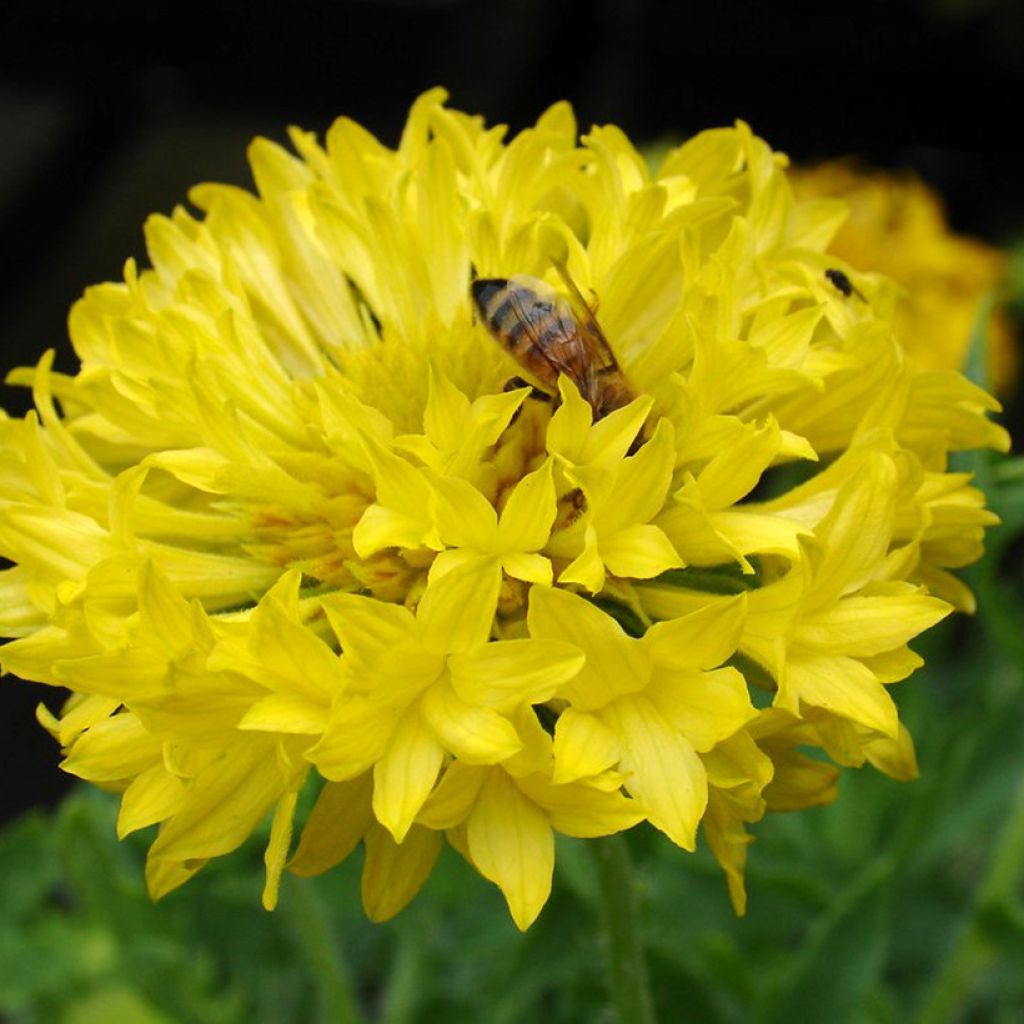

Gaillardia pulchella Yellow Plume seeds- Blanket Flower
Gaillardia pulchella Yellow Plume seeds- Blanket Flower
Gaillardia pulchella Yellow Plume
Blanket Flower
This item cannot be shipped to the selected country
Dispatch by letter from €3.90
More information
Schedule delivery date,
and select date in basket
This plant carries a 6 months recovery warranty
More information
We guarantee the quality of our plants for a full growing cycle, and will replace at our expense any plant that fails to recover under normal climatic and planting conditions.
Seed-only orders are dispatched by sealed envelope. The delivery charge for seed-only orders is €3.90.
Does this plant fit my garden?
Set up your Plantfit profile →
Description
The Annual Blanket Flower or Gaillardia pulchella 'Yellow Plume' is an unusual variety of this short-lived perennial, grown as an annual. It develops medium-sized extra-double flowers, in small yellow pompons, resembling a double cornflower, on a slightly loose clump. These flowers add a delightful lightness in borders, containers, or cut flower arrangements.
The Gaillardia or blanket flower is an Asteraceae that grows in large clumps in sunny and dry prairies of North America. It is highly appreciated for its warm colours, undemanding nature, and very long flowering period from late spring to early autumn. English speakers affectionately call it the 'blanket flower' as its colours resemble the patterns and colours of American Indian tapestries. 'Yellow Plume' comes from the species Gaillardia pulchella, also known as showy blanket flower or Indian blanket, native to Mexico and the southwestern United States. It has a slightly loose habit and can reach 45 cm in height and 30 cm in width. The numerous stems bear a solitary flower with the unusual appearance of double-flowered cornflowers from June to September. The florets, forming the collar, are yellow. The ligules are irregularly placed, giving the flower a slightly tousled look. The flowers are very double, so much so that they form a sphere of tubular florets. The foliage is deciduous, lanceolate, and hairy, often taking on a greyish-green hue.
Gaillardia pulchella 'Yellow Plume' is grown as an annual and its size makes it suitable for use as a ground cover in borders or mixed borders. Gaillardia likes light, well-drained, but rich soils. It doesn't mind drought or heat, so you can plant it in full sun. As it self-seeds abundantly, be sure to remove faded flowers not only to stimulate new blooms but also to prevent it from spreading too much. Associate your gaillardias with white Leucanthemum or Scabiosa in a wild meadow or in a border, as well as with lavenders or perennial geraniums.
Report an error about the product description
Flowering
Foliage
Plant habit
Botanical data
Gaillardia
pulchella
Yellow Plume
Asteraceae
Blanket Flower
Cultivar or hybrid
Other Gaillardia seeds
Planting and care
Sow indoors at 20°C from February to May in multi-purpose potting soil. Lightly cover the seeds with a thin layer of vermiculite and keep them in the light as they need a minimum amount of brightness to germinate. The young shoots will appear approximately 18 days after sowing. Transplant them when all risk of frost has passed and the plants are strong enough to be handled. You can also sow directly in the ground from May to June in well-prepared soil. Make sure to space your plants at least 30 cm apart. To strengthen your Gaillardia plants, divide the clump after two to three years in the spring or autumn.
Sowing period
Intended location
This item has not been reviewed yet - be the first to leave a review about it.
Flower seeds
Haven't found what you were looking for?
Hardiness is the lowest winter temperature a plant can endure without suffering serious damage or even dying. However, hardiness is affected by location (a sheltered area, such as a patio), protection (winter cover) and soil type (hardiness is improved by well-drained soil).

Photo Sharing Terms & Conditions
In order to encourage gardeners to interact and share their experiences, Promesse de fleurs offers various media enabling content to be uploaded onto its Site - in particular via the ‘Photo sharing’ module.
The User agrees to refrain from:
- Posting any content that is illegal, prejudicial, insulting, racist, inciteful to hatred, revisionist, contrary to public decency, that infringes on privacy or on the privacy rights of third parties, in particular the publicity rights of persons and goods, intellectual property rights, or the right to privacy.
- Submitting content on behalf of a third party;
- Impersonate the identity of a third party and/or publish any personal information about a third party;
In general, the User undertakes to refrain from any unethical behaviour.
All Content (in particular text, comments, files, images, photos, videos, creative works, etc.), which may be subject to property or intellectual property rights, image or other private rights, shall remain the property of the User, subject to the limited rights granted by the terms of the licence granted by Promesse de fleurs as stated below. Users are at liberty to publish or not to publish such Content on the Site, notably via the ‘Photo Sharing’ facility, and accept that this Content shall be made public and freely accessible, notably on the Internet.
Users further acknowledge, undertake to have ,and guarantee that they hold all necessary rights and permissions to publish such material on the Site, in particular with regard to the legislation in force pertaining to any privacy, property, intellectual property, image, or contractual rights, or rights of any other nature. By publishing such Content on the Site, Users acknowledge accepting full liability as publishers of the Content within the meaning of the law, and grant Promesse de fleurs, free of charge, an inclusive, worldwide licence for the said Content for the entire duration of its publication, including all reproduction, representation, up/downloading, displaying, performing, transmission, and storage rights.
Users also grant permission for their name to be linked to the Content and accept that this link may not always be made available.
By engaging in posting material, Users consent to their Content becoming automatically accessible on the Internet, in particular on other sites and/or blogs and/or web pages of the Promesse de fleurs site, including in particular social pages and the Promesse de fleurs catalogue.
Users may secure the removal of entrusted content free of charge by issuing a simple request via our contact form.
The flowering period indicated on our website applies to countries and regions located in USDA zone 8 (France, the United Kingdom, Ireland, the Netherlands, etc.)
It will vary according to where you live:
- In zones 9 to 10 (Italy, Spain, Greece, etc.), flowering will occur about 2 to 4 weeks earlier.
- In zones 6 to 7 (Germany, Poland, Slovenia, and lower mountainous regions), flowering will be delayed by 2 to 3 weeks.
- In zone 5 (Central Europe, Scandinavia), blooming will be delayed by 3 to 5 weeks.
In temperate climates, pruning of spring-flowering shrubs (forsythia, spireas, etc.) should be done just after flowering.
Pruning of summer-flowering shrubs (Indian Lilac, Perovskia, etc.) can be done in winter or spring.
In cold regions as well as with frost-sensitive plants, avoid pruning too early when severe frosts may still occur.
The planting period indicated on our website applies to countries and regions located in USDA zone 8 (France, United Kingdom, Ireland, Netherlands).
It will vary according to where you live:
- In Mediterranean zones (Marseille, Madrid, Milan, etc.), autumn and winter are the best planting periods.
- In continental zones (Strasbourg, Munich, Vienna, etc.), delay planting by 2 to 3 weeks in spring and bring it forward by 2 to 4 weeks in autumn.
- In mountainous regions (the Alps, Pyrenees, Carpathians, etc.), it is best to plant in late spring (May-June) or late summer (August-September).
The harvesting period indicated on our website applies to countries and regions in USDA zone 8 (France, England, Ireland, the Netherlands).
In colder areas (Scandinavia, Poland, Austria...) fruit and vegetable harvests are likely to be delayed by 3-4 weeks.
In warmer areas (Italy, Spain, Greece, etc.), harvesting will probably take place earlier, depending on weather conditions.
The sowing periods indicated on our website apply to countries and regions within USDA Zone 8 (France, UK, Ireland, Netherlands).
In colder areas (Scandinavia, Poland, Austria...), delay any outdoor sowing by 3-4 weeks, or sow under glass.
In warmer climes (Italy, Spain, Greece, etc.), bring outdoor sowing forward by a few weeks.

































